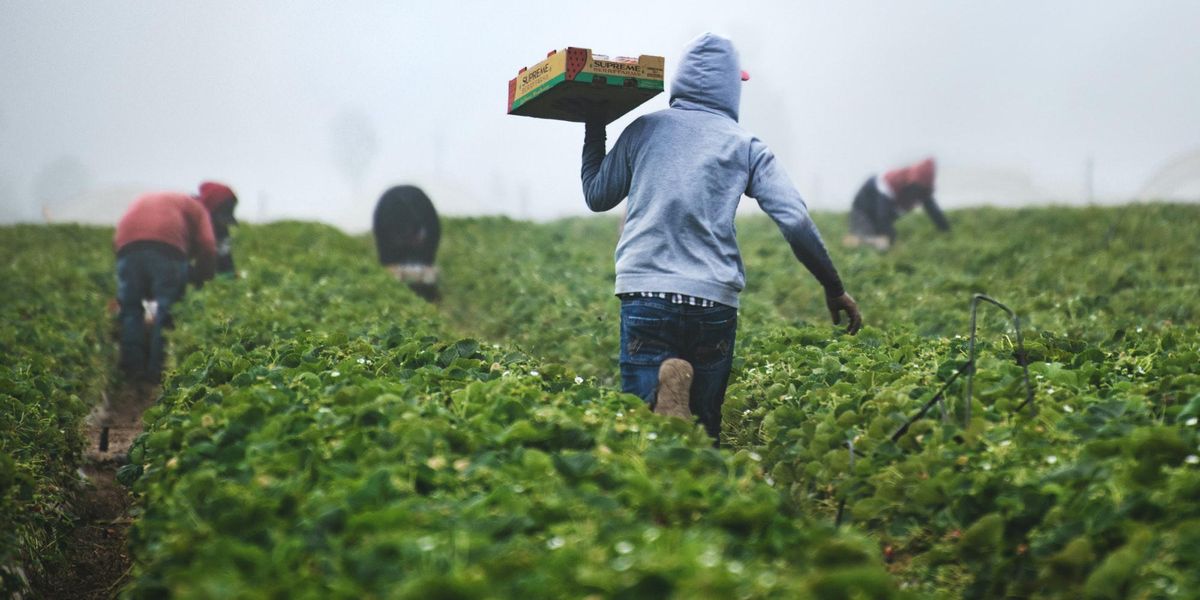
Op-ed: California needs to quit ignoring the public health and climate cost of pesticides
For too long the state has allowed undue regulatory influence by pesticide companies.
It's a pesticide called 1,3-Dichloropropene that's commonly sold under the brand name Telone.
And although it's largely unknown outside agricultural circles, 1,3-D has an outsized footprint. In 1990, state regulators banned use of the carcinogenic pesticide after unsafe levels were found in the air.
Yet in 2018, the most recent year for which we have records, California used more than 12.5 million pounds of 1,3-D and detected it at levels more than three times higher than those that triggered the 1990 ban.
How is this possible? Because California's Department of Pesticide Regulation backtracked on commitments to ban and limit 1,3-D's use, and in 1995 began to reinstate its use under a plan in coordination with the manufacturer Dow. That's why a state court of appeals this month agreed with farmworkers and pesticide reform advocates that state regulators can't rely on underground rulemaking, improperly influenced by industry, to regulate 1,3-D's use.
Related: The reckless embrace of banned pesticides in the US
The pesticide's heavy use is made even more troubling because of its tendency – like many fumigants – to "off-gas" into the air after application. Yet California has chosen to completely ignore the escalating climate and health costs of those pesticides.
Even as state regulators lay out California's 2022 vision for reducing greenhouse gas emissions to fight climate change, they have refused, so far, to account for the growing global warming contribution of pesticides.
That must change. The United Nation's Intergovernmental Panel on Climate Change recently released its sixth report confirming that we're already in a climate crisis and must do more to fight climate change.
Soil health
The Environmental Protection Agency estimates that 50% to 100% of applied pesticides end up in the soil. And soils are the largest terrestrial store of carbon on the planet, playing an essential role in drawing carbon down from the atmosphere into the Earth where it can't act as a greenhouse gas.
The process of storing carbon in the soil is carried out by millions of subterranean species in the soil, from microscopic organisms to earthworms. When soil life is damaged it harms the ability of the soil to suck up carbon.
The largest-ever analysis of pesticides' impacts on soil found significant harm to beneficial, soil-dwelling invertebrates, including earthworms, ants, beetles, and ground nesting bees in 71% of cases reviewed in nearly 400 studies.
But although millions of acres of land in California are treated with nearly 200 million pounds of pesticides each year, the impact of pesticides on soil health is almost completely overlooked.
Impacts to farmworkers
Fumigants, like 1-3,D not only pose dangerous threats to soils, they threaten the health of farmworkers and nearby communities. Soil fumigants are particularly dangerous because after killing soil organisms they often move to the air at levels that can trigger almost immediate adverse health effects in people.
And these fumigants can travel far. Just last year state regulators found 1,3-D in the air at high levels that significantly increase cancer risk up to seven and a half miles away from the closest known application sites.
Most of our Central Valley counties fail air pollution standards for ozone and particulate matter, which aggravate asthma and result in premature deaths. Yet pesticides like 1,3-D that can produce ozone and particulate matter are still used widely in those same counties.
Researchers at the California Environmental Protection Agency found that pesticides were the pollutants with the greatest racial and income disparities in exposure in the state.
Greenhouse gas emissions
Beyond their immediate harms, many commonly-used fumigants result in increased emissions of nitrous oxide, an often-overlooked greenhouse gas that is 300 times more potent than carbon dioxide. Taken together, certain pesticides used to fumigate soils can result in a seven-to-eight-fold increase in nitrous oxide greenhouse gas pollution.
And Volatile Organic Compounds (VOCs) in pesticides – tens of millions of pounds of which are used each year in California – react with sunlight and nitrogen oxides to create tropospheric ozone, the third most significant greenhouse gas after carbon dioxide and methane.
For too long the state has allowed undue regulatory influence by pesticide companies.
Our state leaders must firmly reverse course and aggressively address the climate and health threats posed by our ever-expanding pesticide uses.
Nathan Donley, Ph.D., who co-authored the recent soils study, is the Center for Biological Diversity's environmental health science director.
Sarah Aird is Co-Director of the statewide coalition Californians for Pesticide Reform.
Banner photo: Strawberry harvest in California. (Credit: Tim Mossholder/Unsplash/Unsplash)












